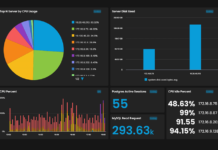We often hear from our customers and others within the in-house legal community that lawyers feel overworked. In fact, Gartner recently reported that 54 percent of corporate lawyers describe themselves as exhausted, which is of great concern, especially when we consider the implications of their work.
A large reason for this exhaustion is a lack of tech tools to empower in-house legal teams to handle increasing workloads and ever-changing business/regulatory complexities.
Time for tech?
The lack of legal technology is due to several factors. One key factor is that very few in-house lawyers have the time to consider how their department operates and how they can leverage technology and digital processes to expedite workflows. In-house legal teams are often the better option for companies, because of the escalating costs of hiring an external law firm. When the in-house lawyers are brought onboard, they often find themselves fighting fires, not leaving much time for them to think about implementing and utilizing a technology stack for their team to help increase their effectiveness, feels like a luxury. However, you wouldn’t run a sales department or an HR department without fit-for-purpose software, so why should legal be any different?
For a legal team to scale up and work more effectively with ever-increasing workloads, they need to slow down before they speed up. When legal teams start to think about software for its function, they also need to think about it from a larger company perspective and ask the question of: How will this technology enable the entire company to move faster and be better?
Additionally, the legal technology that currently exists in the market has historically provided piecemeal solutions and sits in one of two camps: solutions that focus on a single component of legal work, such as contract management or external spend, or expensive technology that only large corporate teams can justify. As a result, in-house legal teams that have legal technology still lack a holistic, purpose-built solution that empowers them to manage workloads and become better service providers across the board.
Future trends and adoption
Given all this, it’s not surprising that a new wave of technology is emerging to provide in-house legal with a workspace designed specifically for them. This has been driven by several factors, including the acceptance of secure Cloud computing, combined with the rise of SaaS enterprise business offerings and the necessity to be able to connect remote working teams.
We strongly believe we will see this emerging as a trend in 2022. An increasing shift/adoption of LegalTech towards connected platforms (vs disconnected point solutions) will provide in-house legal teams with greater ability to own their own interface that connects with the business, and that in turn connects with their own system of record and workflow tools.
This will drive an additional trend where we’ll see a greater adoption of data driven insights that provide legal teams with a view over the entirety of their function – allowing the legal team to better drive education, awareness, and proactive risk mitigation through the business, where and when needed. It will also help create greater leverage of existing finite legal resources by allowing legal teams to get ahead of issues that could be costly in the long run, and that continually result in duplication of effort. This data can also be used to report these wins back to the business, creating a virtuous cycle.
Looking forward
Legal is at the heart of most businesses, so thinking about how to make technology that supports this critical function will have long-term benefits for how well the company will operate. With respect to legal teams specifically, this includes making it easier for everyone in the business to engage with the legal team, improving communications both within the legal team and cross-functionally across the business, while speeding up turnaround times. A more detailed view of the work the team and company is engaging in will also enable any legal team to be more proactive and see how the department is functioning, and whether it is staffed correctly.
By implementing an end-to-end legal workspace, a legal team can manage their work more efficiently and deliver better services; allowing them to mature their operations further. Holistic solutions, rather than siloed technology, are best positioned to provide these outcomes for in-house legal teams.
The desire and the demand for in-house legal teams to have purpose-built systems is real. The need for a team to have a legal workspace that enables them to communicate both cross-functionally and with their colleagues, as well as dealing more efficiently with increasing workloads, has never been greater.















